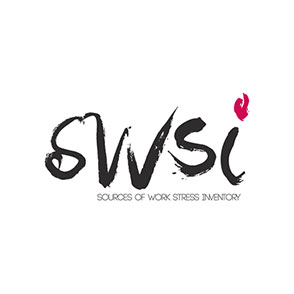The SWSI is a valuable tool for professionals seeking to understand and address work-related stress. It helps assess overall stress levels and pinpoint specific factors contributing to that stress in the workplace. By identifying these sources of stress, organisations can take steps to improve employee well-being and create a healthier work environment.
How can the SWSI be used?
The SWSI offers versatility in its applications:
Individual Assessment: The SWSI can be used as a screening tool to evaluate an employee's stress levels and pinpoint specific stressors. This information is valuable for counseling purposes and developing personalised wellness plans.
Organisational Assessment: The SWSI helps organisations identify areas within the workplace that contribute to employee stress. This allows for targeted interventions aimed at improving overall employee well-being and organisational climate.
Program Evaluation: The SWSI can be used to assess the effectiveness of programs designed to address stress, whether implemented at the individual or organisational level.
What are the Sources of Stress Measured by the SWSI?
The SWSI assesses eight key areas that can contribute to work-related stress:
Role Ambiguity: Unclear expectations, duties, or job limitations can be a significant source of stress.
Relationships: Poor relationships with colleagues or superiors, including interpersonal abuse, can create a stressful work environment.
Tools and Equipment: Lack of proper tools or malfunctioning equipment can hinder job performance and increase stress.
Job Security: Uncertainty about the future of one's employment can be a major stressor.
Career Advancement: Limited opportunities for professional growth within the organization can be a source of frustration and stress for employees.
Lack of Autonomy: Feeling a lack of control over work decisions can contribute to stress.
Work/Home Interface: Insufficient social support at home or difficulty balancing work and personal life can lead to stress.
Workload: Feeling overwhelmed by the amount of work assigned can be a significant stressor.
SWSI Reports
The SWSI offers software-generated reports to provide insightful data:
Individual Report: This report details an individual's stress levels and identifies specific stressors through T-scores and interpretive comments.
Group Report: This report provides average stress levels and key stressors for a group of employees, allowing for targeted interventions at the organisational level.
By utilising the SWSI, professionals can gain valuable insights into work-related stress, ultimately promoting a healthier and more productive work environment.
Product Info
Training
None
Age range
Individuals 16 years and older
Administration time
20-30 minutes
Norms
SA Norms
Languages
English and Afrikaans
Administration Platform
Data Capturing by Client Services
Integrated reports
Available
Author
Nicola Taylor, PhD and Gideon P. De Bruin, DLitt et Phil
Publisher
JVR Psychometrics
Questions about Sources of Work Stress Inventory (SWSI)?
Ask an expert
Fill in the form and one of our product experts will be in touch with you.


